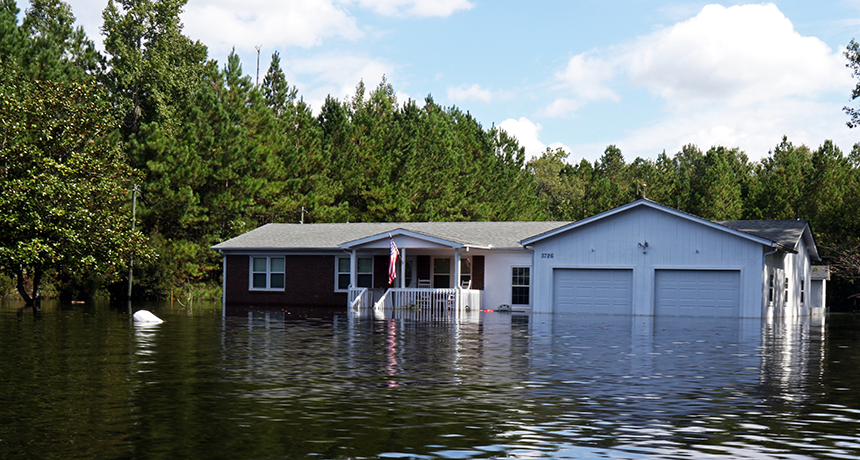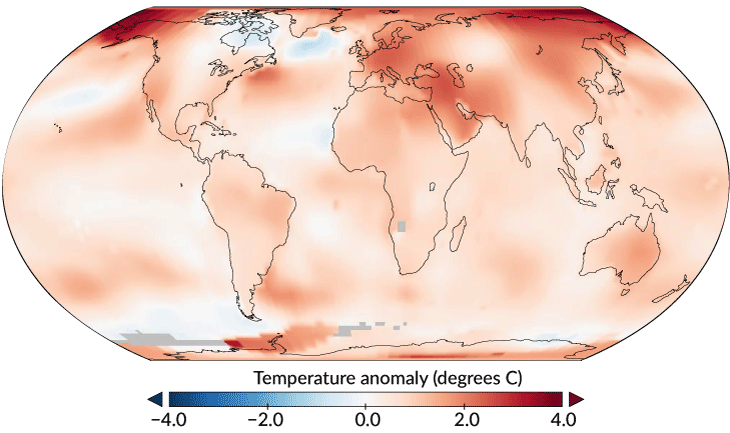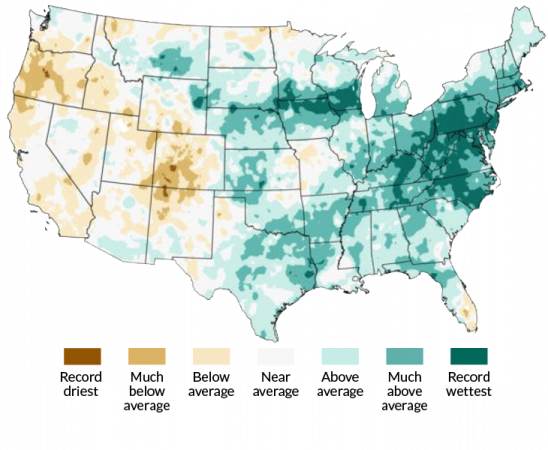Wet and wild 2018 is officially fourth-hottest year
And temps are likely to only keep rising, bringing even more extreme weather

Data from two U.S. agencies linked climate change with more rain in Eastern states — and flooding, such as here, in South Carolina.
SC National Guard/Flickr
Share this:
- Share via email (Opens in new window) Email
- Click to share on Facebook (Opens in new window) Facebook
- Click to share on X (Opens in new window) X
- Click to share on Pinterest (Opens in new window) Pinterest
- Click to share on Reddit (Opens in new window) Reddit
- Share to Google Classroom (Opens in new window) Google Classroom
- Click to print (Opens in new window) Print
By Jeremy Rehm
Overall, 2018 was the fourth-warmest year on record. Only the three preceding years have been hotter. And these global records will likely be broken soon. Climate change trends suggest Earth’s fever will continue to climb, scientists reported on February 6. They spoke at a joint news conference by the National Oceanic and Atmospheric Administration and NASA.
The agencies collected data on global temperatures throughout 2018. These show that 2018 was 0.79 degree Celsius (1.4 degrees Fahrenheit) warmer than the 20th century average of 13.9 °C (57.0 °F).
A warming trend started around the mid-1970s. It “very much resembles riding up an escalator over time,” said Deke Arndt. He heads NOAA’s global monitoring branch in Asheville, N.C.

In much of the Southern Hemisphere, 2018 scored record average highs for the second year in a row. Some Northern Hemisphere regions also recorded their hottest average temperatures. These included parts of Europe, the Middle East and the Western Pacific. And Arctic temps have continued rising faster than the global average.
Climate change also is leading to more erratic rains across much of the world. A warmer atmosphere holds more water vapor. That can both prolong droughts and also lead to bigger downpours once the water is released. “There’s obviously a connection there,” Arndt said.
The United States experienced its wettest year since 1983. Record rains flooded nine eastern states. These include Pennsylvania, Virginia and Maryland. Nationwide, average annual rainfall totaled 87.96 centimeters (34.63 inches). That’s 11.9 cm (4.69 in) above the 20th century average.

“The key message is that the planet is warming,” said Gavin Schmidt. He directs NASA’s Goddard Institute for Space Studies in New York City. That trend shows up, he says, no matter how the data are sliced.
“The long-term trends are extremely robust,” Schmidt added. “Our understanding of why those trends are occurring is also very robust. It’s because of increases in greenhouse gases.”






